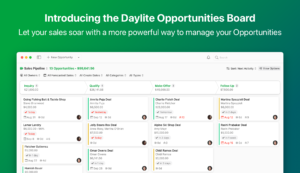When was the last time you stopped to think about your website? Sure, you have one, but what do your visitors do in it? Are they bouncing right away, or are they taking action?
Take a look at your analytics, and see it for yourself. If you aren’t happy with your website’s results, you need to change your strategy. To increase the number of people taking action on your website—e.g., subscribing to your newsletter, setting up a call, etc.—you can use copywriting.
Copywriting represents one of the most essential and effective tools you have at your disposal to transform your website. The following ten copywriting techniques will show you how you can write copy that gets your clients to take action.

Segment your target audience
When done right, copywriting does the job of a salesperson; it speaks directly to one customer, building trust, engaging them in a conversation, and persuading them to take action. You can’t do that if your copy is generic; it has to be targeted to one specific client. And to make your copy more specific, you need to segment your clients into different target audiences.
Your target audience is the idealized representation of the specific client your business works with. It’s based on several data points recollected from customer research, which you can find from:
- Audience analysis: Use tools like Google Analytics or Fintenza to find all the demographic data from each website visitor
- Live chat transcripts: Use a tool like Tidio and analyze every customer transcription
- Surveys: Use a tool like SurveyMonkey or Typeform to send detailed surveys to your email list
- Interviews: Arrange 10-15 client calls and record your conversation to take notes from
- Competitor analysis: Take an in-depth look at each competitor to see what problems they cover
From this data, you can develop a detailed list of issues your target audience has, which you can eventually cover when writing your copy.
Create the right brand sentiment
How you write your copy will affect how your readers feel about your brand. Your copy should reflect the right emotions in your audience. You want people to feel the right way about your brand.
Before you can pick those emotions, you want to analyze what your target audience already feels about your brand. To do so, marketers have developed a technique called “sentiment analysis.”
To start, you want to monitor all your social media accounts, your brand mentions, and how the press, as well as your target audience, talks about your brand. You can even research online forums, customer reviews, and your local media.
By carrying out sentiment analysis, you can find whether your target audience has positive, negative, or neutral feelings towards your brand. Based on your findings, your copywriting will vary:
- If you have a negative brand sentiment, you need to address the causes that explain the feeling proactively.
- If you have positive brand sentiment, you want to highlight the comments and words people use to describe your brand.
- If you have neutral brand sentiment, you want to steer your brand towards the positive specter, highlighting your company’s story, offers, and any other social proof your brand may have.
Hook them
Joseph Sugarman, a preeminent copywriter author of the best-selling book The Adweek Copywriting Handbook, famously said: “All the elements in an advertisement are primarily designed to do one thing and one thing only: get you to read the first sentence of your copy.“
When you write your copy, your goal is to get people to read every sentence, and to do that, you need to hook them. From the headline, every sentence needs to:
- Capture attention
- Stir an emotion
- Spike interest
- Inform and persuade
You can use several copywriting techniques to fulfill this goal:
- Be concise: Make sure every sentence serves a purpose. If it’s unclear or redundant, delete it.
- Ask questions: Humans are drawn to answer when asked a question, so use this tendency—which psychologists call “reciprocity”—to your advantage.
- Shock them: Anything that surprises the reader, like a unique statistic, will hook them quickly. The goal is to break their preconceptions and teach them something they don’t know.
Use engaging copy
Copywriting isn’t like journalism, where the writer has the sole goal of informing the reader; copywriting is about persuading the reader. To persuade through the written word, you need to connect with the reader, making them feel at ease with your brand.
All successful copywriters build trust with the reader by writing like the reader speaks. Most likely, that means your copy will have an informal tone, but that will depend on what you have found in your client research. With this data, you want to:
- Speak openly about your client’s problems: Mention these problems explicitly, digging deep into why they happen, what they mean to your clients, and how they can solve them.
- Put yourself in their shoes: Your copy should look like your client wrote it. You can do this by copying and pasting the same expressions and words your clients use; the more real your copy looks to your clients, the more rapport you will build.
Avoid jargon and hyperbole because that will confuse the reader. As you learned previously, your copy has to be clear and concise, which increases the chances of engaging with the reader.
Spill the beans for them
All copywriters know that the reader doesn’t care about them or their offers, and this idea applies to you as well. The truth is, your target audience only cares about their problems, their pains, and their concerns.
Not only should your copy touch these issues, but it should also explain what it’s in for them. What’s the benefit they get from reading your copy? Spill the beans for them, tell them what they will get from your company and your offers.
Building relationships with your audience is all about helping them, and if you help them through your products and services, they will thank you for it.
Take a look at how HelpDesk presents the following guide on email writing:

The first paragraph clearly explains what the guide will teach the reader, who it targets—email copywriters—and how they will benefit from this information.
Personalize your copy
Ideally, your copy should target each specific reader as if you wrote the entire copy for one person. For example, if you wrote a cold email to a potential customer, you’d want to mention:
- The name of the recipient
- Their position
- Their location
Traditionally, copywriters could only use the information taken from customer research and make many educated guesses. Nowadays, you can use personalization tools to add a high level of specificity to your copy.
Personalization tools like Instapage and Proof take public data, like the one mentioned above, and embed it in landing pages, email, and other marketing copy. Even if these tools are costly, they are worth it.
One study done by Evergage found that personalization drives brand loyalty, with 96% of surveyed marketers stating that personalization helped them advance customer relationships.
Engage your audience with your landing page design
By now, it’s clear that copywriting requires clear, engaging, and relatable communication skills. But without the right landing page design, your copy won’t succeed. As Joseph Sugarman said: “Your ad layout and the first few paragraphs of your ad must create the buying environment most conducive to the sale of your product or service.”
Every part of your landing page needs to work together with your copy, leading the reader to take action. You can’t do one without the other.
At the minimum, your landing page design needs to be as simple as your copy to avoid distracting the reader. But since most landing pages look alike, you also risk that the reader will ignore it. To hook your reader even further, aim to create a unique design to complement your copy.
The image below shows a landing page AcademyOcean uses to promote a guide on lead generation. The entire page was customized to this specific guide, using animated scroll effects that make the user experience engaging and unique.

Such work will increase the chances of catching the reader’s attention, getting more links, shares, and conversions.
Optimize your copy for SEO
The copywriter’s job is to write copy that builds a relationship with the reader; the marketer’s job is to drive traffic to it. From all the digital marketing channels you can use, you want to use a low-cost scalable channel like SEO.
To write your copy with SEO in mind, you need to:
- Carry out keyword research with the help of tools like Ahrefs and SEMrush
- Find keywords with a balance between volume and competitiveness—ideally, you want medium to high-volume keywords with medium to low competition
- Optimize your copy for your chosen keywords
By adding your keywords to your copy, you allow Google to process your page appropriately and rank it for the keywords you optimize your page. As a rule of thumb, you want to add your keyword to:
- The page title—the title tag
- The headline—the H1 tag
- The copy—aim to show your keyword once every 100 words
- The URL
- The images’ alt-tag
If you need help optimizing your copy, you can use a tool like TextOptimizer, which provides suggestions that improve your on-site SEO.
By optimizing your copy for SEO, you will slowly start growing your organic traffic, leading to higher conversions.
Use power words in your CTAs
Your entire copy leads to your call-to-action—also known as “CTA.” The right CTA copy will tell the reader what they need to do and persuade the right actions.
To make their copy more persuasive, copywriters have found that certain words, which they call “power words,” tend to convert better. These words elicit positive emotional responses that motivate the visitor to take action after reading your copy.
Instead of using generic CTAs, like “Buy Now” or “Sign Up,” add some of the following power words to your CTAs:
- Create
- Free
- Get
- Join
- Learn
- Now
- Save
- Start
- Try
Edit your copy (and keep an eye on grammar!)
No matter how concise, persuading, and engaging your copy may be, your audience won’t take action if it’s not grammatically correct. Grammar mistakes distract and irritate the reader, which is why you want to avoid them at all costs.
After you have written your copy, take a day off. Then, proofread it: read every sentence multiple times to find any inconsistencies in your tonality and style. Delete any extra words or sentences that dilute your message.
You can use a grammar app like Grammarly to find spelling mistakes, punctuation inconsistencies, and clarity issues. Alternatively, hire a professional proofreader to fix your copy, albeit at a higher cost.

Final thoughts
Copywriters are experts at persuasion, whether that’s building trust, generating leads, or selling a product or service. These ten copywriting techniques have shown to work for generations of copywriters, and so they will work for you.
If you want your readers to take action on your website, it’s time you pick one of the techniques shown here and use it on your website. Which one is it going to be?
__
About the author: Ivan Kreimer is a freelance content writer for hire who creates educational content for SaaS businesses like Leadfeeder and Campaign Monitor. In his pastime, he likes to help people become freelance writers. Besides writing for smart people who read sites like Marketcircle, Ivan has also written in sites like Entrepreneur, MarketingProfs, TheNextWeb, and many other influential websites.


